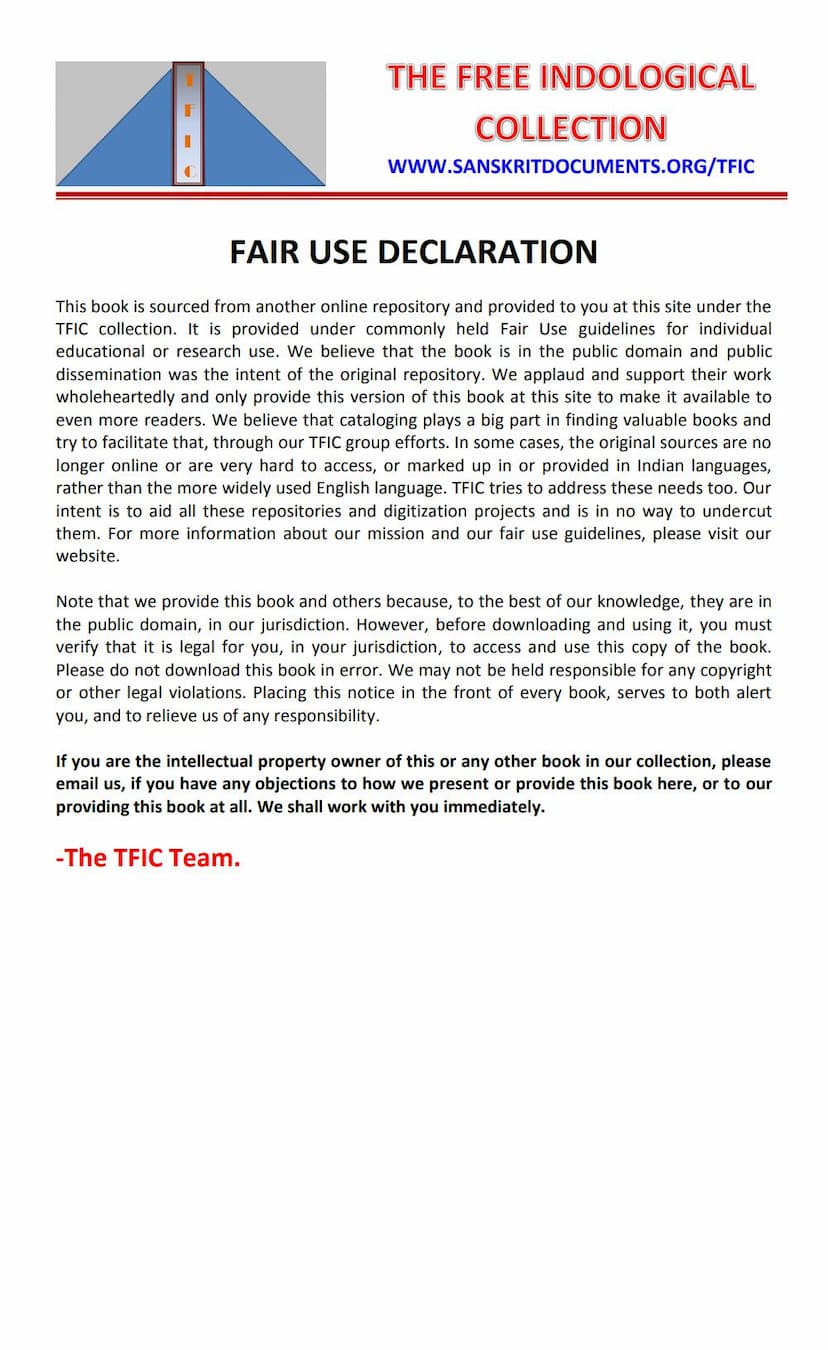Jain Dharm Aur Vidhva Vivaha 02
Added to library: September 1, 2025

Summary
This document is the second part of a book titled "Jain Dharm aur Vidhva Vivaha" (Jainism and Widow Marriage) authored by Savyasachi and published by Jain Bal Vidhva Sahayak Sabha, Delhi, in 1931. The book is part of The Free Indological Collection.
Core Argument:
The central thesis of the book is a strong advocacy for widow marriage within Jainism, arguing that it is not only permissible but also a morally and socially necessary practice. The author directly confronts the societal stigma and religious objections prevalent at the time, which equated widow remarriage with adultery or sin.
Key Points and Arguments:
- Societal Decline: The author attributes the significant decline in the Jain and Hindu populations directly to the societal aversion to widow remarriage. This practice leads to a large number of unmarried men and a significant population of young widows.
- Male Privilege vs. Female Suffering: The text highlights the hypocrisy where widowers are allowed to remarry multiple times, even in old age, while young widows are denied the same right. This leads to the suffering and potential downfall of many young widows.
- Jainism's Compatibility with Social Progress: Savyasachi asserts that Jainism is not only conducive to spiritual advancement but also to social progress. It champions equality, extending the same rights and considerations to women as it does to men.
- Rebuttal of Objections: A significant portion of the book is dedicated to systematically refuting objections raised by critics (Pdt. Shrilalji Patni and Pdt. Vidyanand Sharma). The author engages with specific arguments concerning:
- Samayaktva (Right Faith): Addressing claims that widow remarriage leads to the destruction of Samyaktva by arguing that the kashayas (passions) involved are not necessarily anantananubandhi (perpetually binding) and that even intense kashayas do not destroy Samyaktva. It compares the situation of a widow remarrying to that of a widower.
- Sapt Vyasan (Seven Vices): Clarifying that not every act of parastrisavan (relations with another man's wife) makes one a vyasani (addicted to vice) and that the abandonment of parastrisavan is a stage in spiritual progress.
- Scriptural Interpretation: Examining the use of terms like "kanya" (maiden) in Jain scriptures, arguing that it can also refer to a marriageable woman, including a widow, and that the context of "kanyavaranam" (choosing a maiden) in marriage definitions does not exclude widows.
- Karuṇānu-yoga (Discipline of Compassion): Discussing how Karunanu-yoga, which deals with worldly affairs and compassion, would support widow remarriage to alleviate suffering and prevent greater sins like adultery and violence.
- Celibacy vs. Widowhood: Arguing that while celibacy (brahmacharya) is the ideal, for those unable to maintain it, marriage (including widow remarriage) serves as a way to channel desires and prevent greater transgressions.
- Social Norms and Dharma: Emphasizing that social customs should align with Dharma, and if they deviate, they should be corrected. It criticizes the practice of blind adherence to tradition when it causes suffering.
- Scriptural Citations and Counter-arguments: The author extensively quotes and analyzes Jain scriptures (like Rajavartika, Gommatasara, Sutrapranaya, etc.) and also references Hindu scriptures (like Atharvaveda, Smritis) to support his arguments. He meticulously addresses and refutes the counter-arguments presented by his critics.
- Practical Necessity: The author stresses that widow remarriage is a practical solution to address societal issues like declining population, preventing women from falling into sin due to unmet desires, and ensuring the continuity of family lineage.
- Critique of Critics: Savyasachi is critical of his opponents, accusing them of being narrow-minded, hypocritical, and driven by personal bias or adherence to outdated traditions rather than the true spirit of Jainism. He criticizes their reliance on superficial interpretations and their failure to understand the underlying principles of compassion and equality.
- Call to Action: The book concludes with an appeal to all Jain and Hindu brothers to read the book and understand that widow remarriage is not forbidden but is rather a virtuous and beneficial act, essential for the well-being of society and for saving women from greater sins. The Jain Bal Vidhva Sahayak Sabha (Jain Association for the Aid of Widows) is presented as an organization working towards this cause.
Overall Tone:
The book is written with conviction and passion. The author is assertive in his arguments, engaging in detailed textual analysis and philosophical reasoning to dismantle the opposition's views. The language is direct and at times polemical, reflecting the author's strong commitment to reforming societal practices concerning widow remarriage.